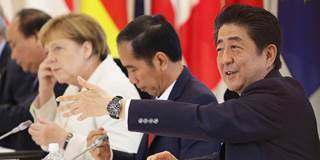Since the global financial crisis of 2008, monetary policy has borne much of the burden of sustaining aggregate demand, boosting growth, and preventing deflation in developed economies. Eight years later, its time to pass the baton to fiscal policy.
NEW YORK – Since the global financial crisis of 2008, monetary policy has borne much of the burden of sustaining aggregate demand, boosting growth, and preventing deflation in developed economies. Fiscal policy, for its part, was constrained by large budget deficits and rising stocks of public debt, with many countries even implementing austerity to ensure debt sustainability. Eight years later, it is time to pass the baton.

NEW YORK – Since the global financial crisis of 2008, monetary policy has borne much of the burden of sustaining aggregate demand, boosting growth, and preventing deflation in developed economies. Fiscal policy, for its part, was constrained by large budget deficits and rising stocks of public debt, with many countries even implementing austerity to ensure debt sustainability. Eight years later, it is time to pass the baton.